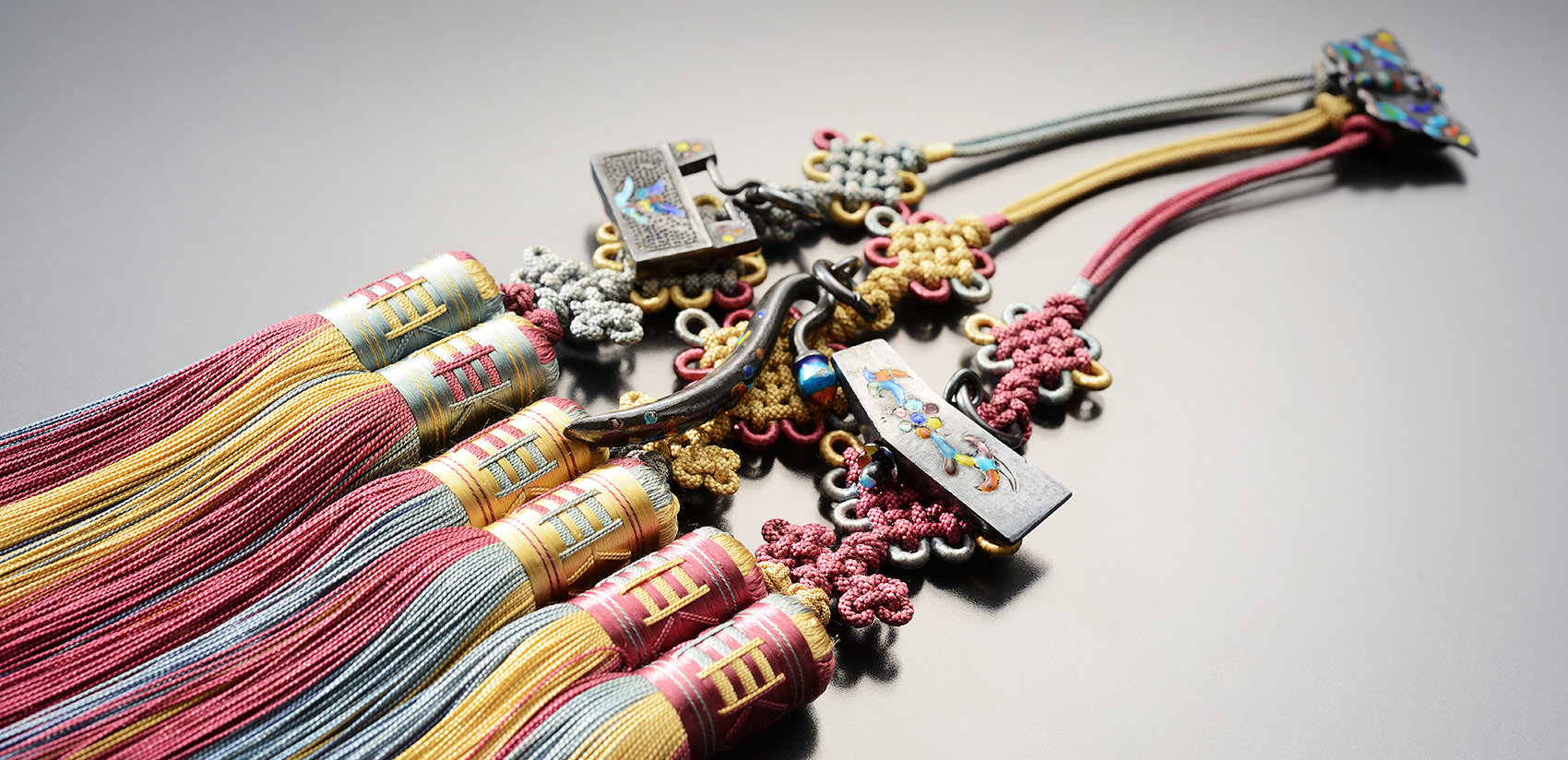
Contents





I Design, Therefore I Am

Just Enough in Every Way





Maedeup,
Just Enough in Every Way
According to the industrial designer Dieter Rams, “less is more” defines a good design. Since the olden days, designers in Korea knew how to be minimal in their use of ornaments. They added maedeup, traditional knots, as finishing touches to traditional costumes, scrolls and musical instruments. Their style of design placed an emphasis on the harmonious relationship between people and the environment. In the words of graphic designer Milton Glaser, “just enough is more” and this beauty can be found in traditional Korean knots, maedeup (매듭).
Written by Lee Eun-yi, designer & writer
 Norigae, a Korean traditional accessory, is connected to six sul. © Park Seon-keung
Norigae, a Korean traditional accessory, is connected to six sul. © Park Seon-keungOrnament for the Ordinary
From the use of strings in stone knives and axes from the New Stone Age, we can see that knots have a rich history. Formal knots can also be seen in murals and Buddhist paintings from Goryeo (918-1392) and in paintings and clay dolls dating back to Joseon (1392-1910).
Traditional maedeup, used to decorate all kinds of objects, was an integral part of everyday life. These knots were seen on clothes, musical instruments, pockets, palanquins, biers, fans, scrolls, rungs and buttons. It served as not only ornament, but also as talisman of peace and happiness. While knots elsewhere tend to be flat or pattern-based, knots from across Northeast Asia, and especially Korea, tend to be much more three-dimensional. As for the style of knotting, Korea was influenced by China, and, in turn, Japan by Korea. Compared to China’s fancy knots, Korea’s maedeup shows a plain and reserved beauty.
 Portrait of a Beauty by Sin Yun-bok.
Portrait of a Beauty by Sin Yun-bok.The beautiful ornament is hung from the woman's clothes.
© KANSONG ART AND CULTURE FOUNDATION
 Tradtional maedeup is still used as modern ornaments. © National Intangible Heritage Center
Tradtional maedeup is still used as modern ornaments. © National Intangible Heritage CenterThe Aesthetics of Perfection
Traditional maedeup designs are symmetrical and have the same front and back. A single strand is used to weave shapes of animals and plants, and there are more than 30 shapes known to date. Some well-known styles of knot include the chrysanthemum, cicada, dragonfly, lotus, bee, butterfly, plum blossom and chick. Made from silk threads dyed naturally, traditional knots are characterized by their subtle but rich colors. They are just enough in every way: simple yet exquisite, and seemingly complex yet balanced.
 Maedeup adds some elegance to traditional curtains used to block the wind and the cold.
Maedeup adds some elegance to traditional curtains used to block the wind and the cold. © Korea Cultural Heritage Foundation
Kim Hui-jin, a master of decorative knotting, described traditional maedeup as “balance and order perfected by a reserved beauty.” It is a long journey to the birth of a perfect knot. Silk threads are washed and dyed, and the dyed threads are twisted together. Because knotting is such a meticulous process, it takes three months to make one norigae, a traditional accessory that uses maedeup styles and which is hung from a woman’s clothes. Traditional knots are no longer used as widely as they were in the past. However, designers are attempting to preserve the tradition by applying their style to mobile phone accessories, earrings and bracelets. As a tribute to the masters of knotting, let’s bring some grace and elegance to the everyday by getting our own maedeup ornament.
 A variety of colored threads are magically intertwined with each other. © National Intangible Heritage Center
A variety of colored threads are magically intertwined with each other. © National Intangible Heritage CenterOther Articles





I Design, Therefore I Am

Just Enough in Every Way




Application of subscription
Sign upReaders’ Comments
GoThe event winners
Go


 August 2018
August 2018


